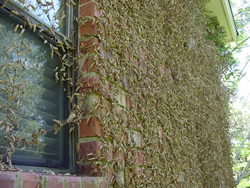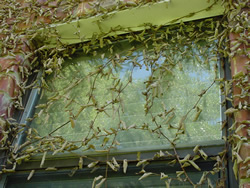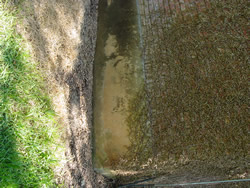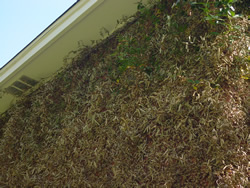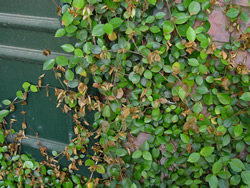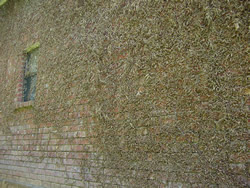Search
For The Answer
Click here to access our database of
Plant Answers
Search
For The Picture
Click here to access the Google database of plants
and insects
Information
Index
Alphabetical Listing of Topics, Recommendations
and Plants
Milberger's Nursery and Landscaping
3920 North Loop 1604 E.
San Antonio, TX 78247
210.497.3760
nursery@milbergersa.com
Open 9 to 6 Mon. through Sat.
and 10 to 5 on Sun.

Three exits east of 281, inside of 1604
Next to the Diamond Shamrock station
Please click map for more detailed map and driving directions.
|
THE "FRIENDLY" PLANT KILLER OF CHOICE Horticulturists who work for the Texas Cooperative Extension and Texas A&M University are in the business of helping people grow plants successfully and find enjoyment and fulfillment while doing so. To this end, we identify superior plant material for the different regions of Texas, make this plant material available in large quantities to consumers, and help with questions about how to most successfully grow plants in Texas. We are "burdened" by having to recommend only those practices which have been tested-and-proven to be effective. We feel a personal obligation to recommend only practical, effective solutions. These solutions may be counter to the "feel good" solutions offered by certain radio garden show hosts who insist on spewing unsubstantiated claims of environmental mismanagement by anyone and everyone who recommends or utilizes a "man-made" petro-chemical solution to a problem. This is hypocritical to say the least since the very existence of these same protestors of man-made chemicals have been, and will continue to be, dependent on man-made chemicals-unless these same people stop taking any type of man-made medicine and exist only on the food they produce. Glyphosate, also sold as Roundup, Glyphosate and Ortho Kleanup is an effective, safe product when used as intended and directed on the product labels. Glyphosate is the least toxic of all the herbicides. This fact was proven when 20 discontented workers at the glyphosate manufacturing facility decided to claim harmful side-effects of producing the product. To emphasize how harmful this toxic product could really be, each of these 20 workers drank a pint of pure glyphosate. Unfortunately for the process of natural selection of the species, this irresponsible act only made two of the twenty malcontents ill- it made the other 18 seriously regular in their toilet attendance!! But guess who made the news? You guessed it-the two people who were hospitalized. These products KILL WHAT THEY TOUCH unless washed off within 30 minutes. This means that invasive plants can be targeted without damaging surrounding plants. This technique has been used on patches of nutsedge, bamboo and woody plant systems growing in desirable vegetation. It kills what it touches but it is deactivated when it comes in contact with the soil. There is a bacteria in the soil, and especially in the alkaline soils of South Texas, that loves it and literally eats it up. Glyphosate is a systemic killer which gets into the plant's system and kills the entire plant-roots and all. This kill occurs without digging the plant out and disturbing the root system. Dr. Don Marks, world wide known expert on the soil microorganism mycorrhizae, said physically digging weeds and grass destroys the target weed and also the beneficial mycorrhizal fungi before it gets a chance to form spores. When herbicides such as glyphosate are used, the host plant stops sending carbohydrates before it dies signaling the fungi to quickly form spores or "seeds" for its survival . Grubbing weeds and grass out is a bigger enemy to the "natural and organic" mycorrhizae then glyphosate herbicides.. All of this information was brought to light by Malcolm Beck, the Father of Organic Gardening in Texas and a good friend of mine for over 30 years. Malcolm came under severe criticism from his organic disciples for making the statement in an article which said: "Nature could approve of glyphosate if used properly in some conditions". http://www.plantanswers.com/roundup.htm This article explains a common-sense, practical, real-life approach to the beneficial use of certain herbicides in a no-till plant production scheme. More of common sense, tried-and-proven philosophy can be found on Malcolm's website at: http://malcolmbeck.com/articles/articles-index.htm The good news about glyphosate is also considered the bad news by some people-glyphosate is not a good killer of many woody and succulent plants. Which means you can spray it around shrubs, Asian Jasmine, Turk's cap, cactus and Purple Heart (some call it Purple Wandering Jew) without burning the foliage (unless it is young, tender foliage of jasmine) or damaging the plant in any way. This means you could remove unwanted weeds and grass from the above mentioned plants without severely damaging them. In California, commercial growers apply glyphosate to recently harvested asparagus fields to remove invasive weeds and grasses such as bermudagrass since the thin leaves of asparagus does not uptake the product.
Dr. Jerry Parsons is a Professor for Texas A&M
University and a Texas Cooperative Extension Horticulturist for
over 30 years in South Central Texas. |




